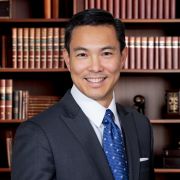Julia Leung, a prominent figure in the financial industry, delivered a keynote speech at the OSC Dialogue, titled 'Fostering Future-ready Capital Markets in a New Era of Uncertainty' on April 25, 2025.
This article was generated using SAMS, an AI technology by Timothy Loh LLP.
On April 25, 2025, Julia Leung, a distinguished speaker in the financial industry, delivered a keynote address titled 'Fostering Future-ready Capital Markets in a New Era of Uncertainty' at the OSC Dialogue. The speech was posted on the SFC website and underscores the challenges and opportunities in today’s capital markets.
Ms. Leung stressed the importance of preparing the capital markets for future uncertainties. She highlighted several trends that are reshaping the market, including technological advancements, regulatory changes, and evolving investor demands.
She noted that while the market faces many unknowns, there is significant potential for innovation and growth. Collaboration between industry players, regulators, and policymakers is crucial to building a resilient market structure.
Among the key points Ms. Leung raised were the increasing use of technology such as artificial intelligence and blockchain to enhance market efficiency and transparency. She also emphasized the need for continuous education and training for industry professionals to adapt to these changes.
Ms. Leung underscored the importance of sustainable investing and the integration of environmental, social, and governance ("ESG") factors into investment decisions. These practices benefit the environment and contribute to long-term financial sustainability.
The speech concluded with a call for stakeholders to engage in open dialogues and work together to create a future-ready capital market capable of navigating the complexities of the new era.
The speech was published under the ‘Published resources > Speeches’ section of the SFC website for reference, serving as a comprehensive guide for market participants and policymakers in understanding the current state and future directions of the capital markets.
View the full article:Source





